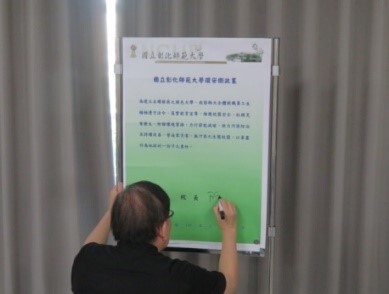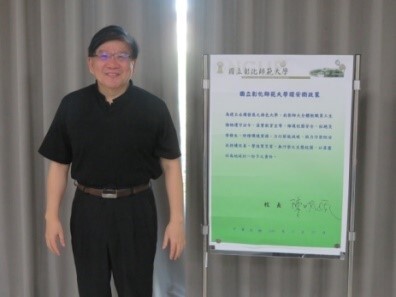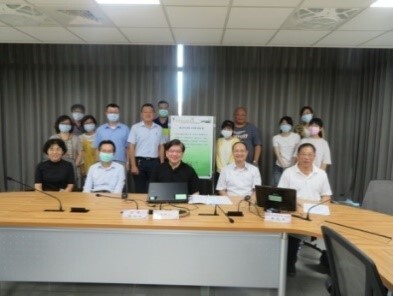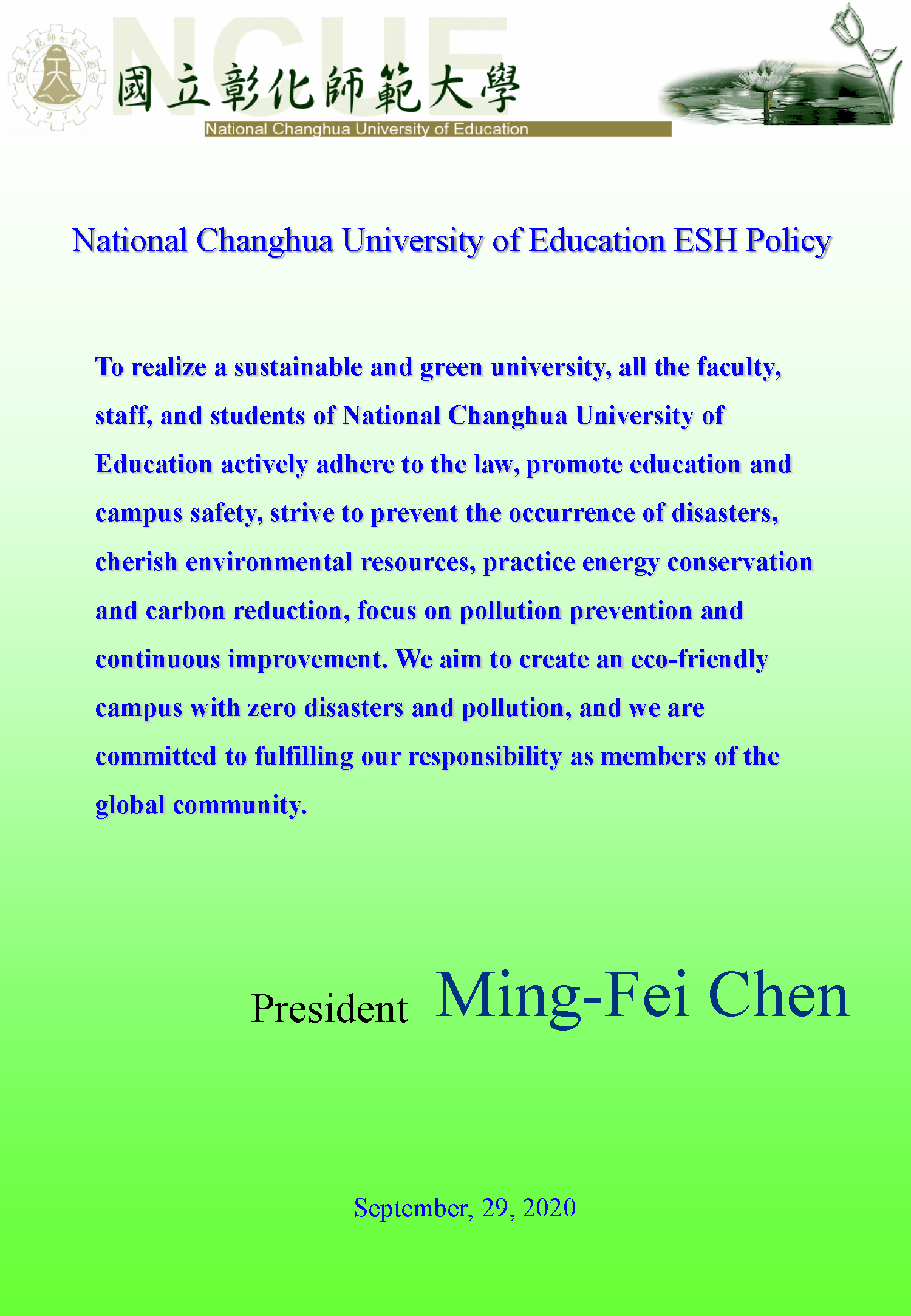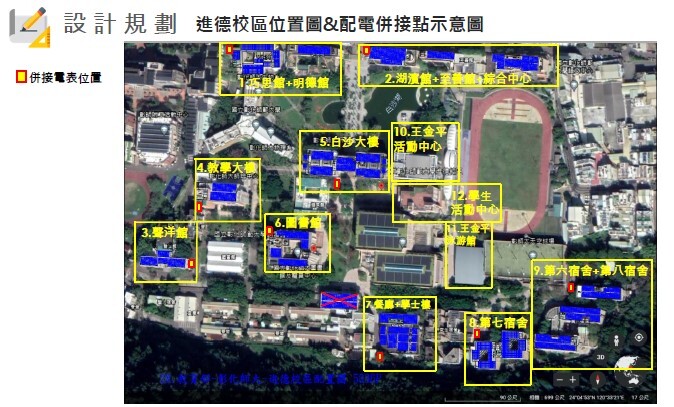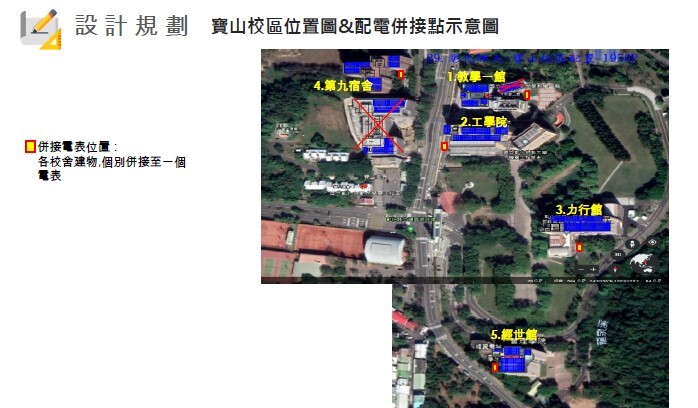SDG 12.4.1 Publication of a sustainability report
1. NCUE’s THE Report by Year:
2021: https://sdg.ncue.edu.tw/var/file/32/1032/img/257/110.11.5-Generel_Report-V.1-final-111.1.18.pdf.
2022: https://sdg.ncue.edu.tw/var/file/32/1032/img/257/2022-allsdgs-reports.pdf.
2.On 29 September 2020, in the presence of members of the Occupational Safety and Health Committee, the President of NCUE signed the "Protection and Occupational Safety and Health Policy of National Changhua University of Education", as shown in Figure 1. It specifies the following: to build a sustainable and green university, faculty, staff, and students at NCUE should fully comply with the relevant laws and regulations, participate in educational programmes, maintain campus security, prevent accidents, cherish the environmental resources, act on energy conservation and carbon reduction, and commit to pollution prevention and continuous improvement. As a member of the global village, everyone should fulfil their responsibilities to build an ecological campus free of accidents and pollution, as shown in Figure 2.
Please refer to annex 12.4.1A - Protection and Occupational Safety and Health Policy, as well as the Centre of Protection and Occupational Safety and Health’s website for posting laws, regulations, and rules applying to faculty and staff:
|
|
|
Figure 1. NCUE President signing the ‘Protection and Occupational Safety and Health Policy of National Changhua University of Education’ |
|
|
|
Figure 2. Protection and Occupational Safety and Health Policy of National Changhua University of Education |
3. Solar Photovoltaic Power Generation Rooftops.
In response to relevant national policies, NCUE will complete the addition of solar photovoltaic panels on the roof of each building of NCUE by the end of July 2022, with a total capacity of 2091.375kWp for Jinde Campus and 571.5kWp for Baoshan Campus, as shown in Table 1. In addition to reducing the net load of the buildings, in some scenarios (such as off-peak months) the building can be fully dependent on solar photovoltaic electricity. Given the reduced electricity current of the distribution lines, line loss can be reduced by about 3% and energy efficiency can be improved. Moreover, solar panels can block direct sunlight from the roof. According to research data, they can reduce the heat energy of direct sunlight on the roof by 38% and reduce the temperature of the roof by 2.8°C. With the building’s improved overall temperature environment, air conditioning use can be reduced to improve energy efficiency. The planning and design drawings (partial) of the building’s rooftop solar photovoltaic panels in Jinde Campus and Baoshan Campus in 2021-2022 is shown in Figure 3 and Figure 4. Please refer to Annex 12.4.1B - Rooftop Solar Photovoltaic Building Panels Planning and Drawings in Jinde and Baoshan Campuses.
Table 1. Installed solar photovoltaic capacity in each building of NCUE
|
Campus |
Building |
Expected capacity (kWp) |
Total |
Expected electricity production (kwh/year) |
Total |
|
Jinde Campus |
Qiau-si Building (Dept. of Mathematics) |
69 |
2,091.375 kWp |
196,875 |
2,714,531.25kWh |
|
Baisha Building (Main Administration Building) |
191.625 |
147,656 |
|||
|
Zhi-shan Building (Dept. of Special Education) |
48 |
314,063 |
|||
|
Ming-de Building (Dept. of Guidance and Counseling) |
85.125 |
60,000 |
|||
|
Teaching Building |
92.25 |
80,156 |
|||
|
Eighth Dormitory |
189 |
120,469 |
|||
|
Seventh Dormitory |
181.5 |
249,375 |
|||
|
Sixth Dormitory |
88.5 |
226,875 |
|||
|
Hu-bin Building (Dept. of Rehabilitation Counseling) |
123 |
110,625 |
|||
|
Library |
133.5 |
153,750 |
|||
|
General Building |
103.875 |
166,875 |
|||
|
Restaurant |
146.625 |
144,375 |
|||
|
Sheng-yang Building (Dept. of Geography) |
99.375 |
265,313 |
|||
|
Shiue-si Building (Dept. of Chinese) |
36 |
|
|||
|
Wang Jin-pyng Activity Center |
160.65 |
|
|||
|
Wang Jin-pyng Swimming Pool |
239.4 |
124,219 |
|||
|
Old Activity Center |
103.5 |
|
|||
|
Baoshan Campus |
Ninth Dormitory |
99.75 |
571.5 kWp |
125,625 |
714,375 kWh |
|
Teaching Building No. 1 |
69.75 |
126,563 |
|||
|
College of Engineering |
139.5 |
174,375 |
|||
|
Jing-shi Building (College of Management) |
114.375 |
142,969 |
|||
|
Li-xing Building (Dept. of Industrial Education and Technology) |
148.125 |
185,156 |
|
|
|
Figure 3. Planning and Design of Solar Photovoltaic Roofs of Buildings at Jinde Campus |
|
|
|
Figure 4. Planning and Design of Solar Photovoltaic Roofs of Buildings at Baoshan Campus |
4. NCUE held second-hand markets and in 2021 received over 500 donated items with total proceeds of over NT$10,000. Donated goods in 2022 exceeded 200 items, and proceeds exceeded NT$5,000 from sales. Please refer to Annex 12.4.1C - Second-Hand Markets.
5. NCUE organized the adoption of abandoned bicycles. Altogether, 30 bikes in 2020, and 31 bikes in 2021. Since the installation of YouBike stations at NCUE’s school gate in 2022, the number of students riding their own bicycles has been decreasing. There are very few abandoned bicycles, so we have not conducted a reclaiming process. Please refer to Annex 12.4.1D - Adoption of Abandoned Bicycles.
6. NCUE library runs a second-hand book donation platform. 289 books were donated in the 2020-2021 academic year, 219 books were donated in the 2021-2022 academic year, and 316 books were donated in the 2022-2023 academic year. Please refer to Annex 12.4.1E - Claiming Second-hand Books.
7. NCUE’s declaration of sustainability development:
The President of NCUE signed the “Commitment to Sustainability Development of National Changhua University of Education” in September 2022. Please refer toAnnex 12.4.1F - Commitment to Sustainability Development
Appendices (including supporting documents):
Annex 12.4.1A - Protection and Occupational Safety and Health Policy (latest version)
Annex 12.4.1B - Rooftop Solar Photovoltaic Building Panels Planning and Drawings in Jinde and Baoshan
Annex 12.4.1C - Second-Hand Markets
Annex 12.4.1D - Adoption of Abandoned Bicycles
Annex 12.4.1E - Claiming Library Second-Hand Books
Annex 12.4.1F - Commitment to Sustainability Development

